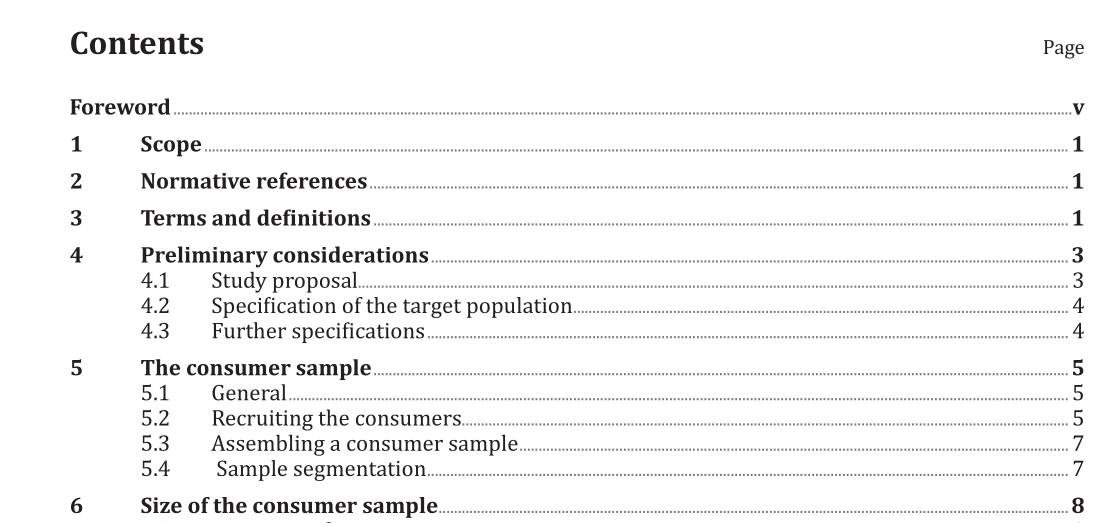ISO 11136:2014 pdf download.Sensory analysis — Methodology — General guidance for conducting hedonic tests with consumers in a controlled area
1 Scope
This International Standard describes approaches for measuring, within a controlled area, the degree to which consumers like or relatively like products.
It uses tests based on collecting consumers’ responses to questions, generally on paper or via a keyboard or a touch screen. Tests of a behavioural nature (such as recording quantities consumed ad libitum by the consumers) do not fall within the scope of this International Standard.
The hedonic tests dealt with in this International Standard, can be used as a contribution to the following:
— comparing a product with competitor products;
— optimizing a product so that it obtains a high hedonic rating or is liked by a large number of consumers;
— helping to define a range of products to correspond to a particular consumer target population;
— helping to define a best-before date;
— assessing the impact of a product formulation change on the pleasure given by the product;
— studying the impact of sensory characteristics of a product on degree to which it is liked,independently of the product’s extrinsic characteristics, such as brand, price, or advertising;
— studying the effect of a commercial or presentation variable, such as packaging.
The methods are effective for determining
— whether or not, a perceptible preference exists (difference in degree of liking), or
— whether or not, no perceptible preference (paired similarity test) exists.
2 Normative references
The following documents, in whole or in part, are normatively referenced in this document and are indispensable for its application. For dated references, only the edition cited applies. For undated references, the latest edition of the referenced document (including any amendments) applies.
ISO 4121, Sensory analysis — Guidelines for the use of quantitative response scales
ISO 5492, Sensory analysis — Vocabulary
ISO 5495, Sensory analysis — Methodology — Paired comparison test
ISO 8587, Sensory analysis — Methodology — Ranking
ISO 8589, Sensory analysis — General guidance for the design of test rooms
ISO 29842, Sensory analysis — Methodology — Balanced incomplete block designs
3 Terms and definitions
For the purposes of this document, the terms and definitions given in ISO 5492 and the following apply.
5.2.2 Task-specific recruitment
Task-specific recruitment can be conducted in a public place, at a sales point, by telephone, by mail or electronic mail or by advertisement in a local newspaper or radio station, or by social network or other internet ways. In many cases, it is necessary to reach a prior agreement with the corporation or organization responsible for the area in which the recruitment occurs. The manner of recruiting and the time of approaching the consumers (in particular when making contact at public places or by phone and when distributing information through the media) can have a strong effect on the composition of the consumer sample.
ISO 11136:2014 pdf download
